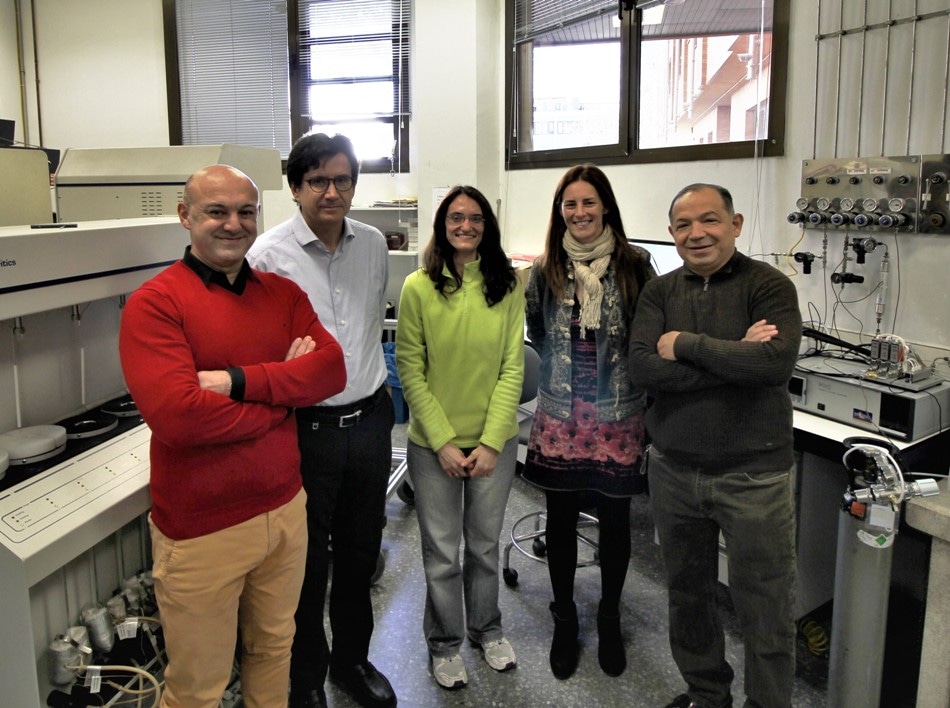Feb 19 2019
Scientists have created a new nanomedicine and marker which boosts the efficiency of a chemotherapy drug called docetaxel a hundredfold while enabling the early diagnosis of prostate cancer.
 Image credit: RUVID
Image credit: RUVID
In Europe, prostate cancer is the most widespread type of cancer among men with a frequency greater than 100 cases per 100,000 individuals. Moreover, it is, at present, the second most prevalent reason for cancer-related deaths among men.
This pathology mostly affects elderly men: nine in 10 deaths occurs after 65 years of age. Thus, it signifies a very critical health concern in developed nations, where the population of aged men is majoritarian. In this background, even though docetaxel is an extensively used chemotherapy treatment for advanced prostate cancer, its high systemic toxicity restricts both the dose as well as the therapy’s duration, which markedly decreases its antitumor efficiency.
Currently, a team of scientists from Valencia’s Polytechnic University (UPV), the Spanish National Research Council (CSIC), the La Fe University and Polytechnical Hospital and the Prince Philip Research Centre (CIPF), have created a new nanomedicine to treat non-metastatic prostate cancer.
The tests conducted pave the way for the future application of highly effective treatments with very minimal doses of docetaxel.
“The antitumour activity of docetaxel was improved up to a hundredfold in the in vitro studies on prostate cancer cells with PSMA receptors,” emphasizes Pablo Botella, head scientist of the CSIC in the Chemical Technology Institute, mixed center of the UPV and CSIC.
After the in vitro research, the work is, at present, in a phase of in vivo pre-clinical tests. In the meantime, clinical trials—phase I—should start in less than two years on a reduced number of patients.
Facilitating the diagnosis
Moreover, the scientists have also created a new nanomarker which allows the identification of tumor tissue in the prostate with a high level of accuracy.
Thanks to the PET image technique, we can flag the nanomedicine with a radioactive isotope which makes it possible to locate the malign tissue in the prostate with unicellular precision, which will facilitate the diagnosis of the disease in its initial stages, thus making its early detection easier.
Pablo Botella, Head Scientist, CSIC, Chemical Technology Institute.
These results have been reported in the journal ACS Omega, of the American Chemical Society (ACS).
What is the new nanomedicine like?
The new nanomedicine designed by these scientists is a system comprising of porous silica nanoparticles, functionalized with the docetaxel medicine and a monoclonal antibody (anti-FOLH1) which selectively works together with the PSMA receptors of prostate cancer cells. The system displays considerable stability in biological fluids and all its components are permitted by the Food and Drug Administration (FDA, US) for clinical use.
The existence of the monoclonal antibody boosts the cellular internalization of the nanomedicine into the malignant cells (no less than 25% more compared to merely administering the medicine, as this disperses to any cell, be it cancerous or not). In this manner, the nanomedicine reaches more tumor cells. Moreover, the use of a particular anchoring protocol of docetaxel to the nanoparticles allows its selective discharge within the cancerous cells.
CURSOL foundation and TETRACAP project
This research was originally funded by the CURSOL (Valencian Community Resource and Solidarity Culture) foundation, and is, at present, incorporated into the TETRACAP project, which is sponsored by the Valencian government, and whose chief researcher is professor Jose María Benlloch, head of the Molecular Image Instrumentation Institute (I3M), mixed center of the UPV and CSIC.
In this research, along with the I3M, scientists of the Chemical Technology Institute also participated, headed by Dr. Pablo Botella. Furthermore, a team of the La Fe hospital also participated, headed by Dr. Cesar David Vera-Donoso; and another from the Prince Philip Research Centre, headed by Dr. Victoria Moreno. The in vivo and clinical trials are managed in these centers.